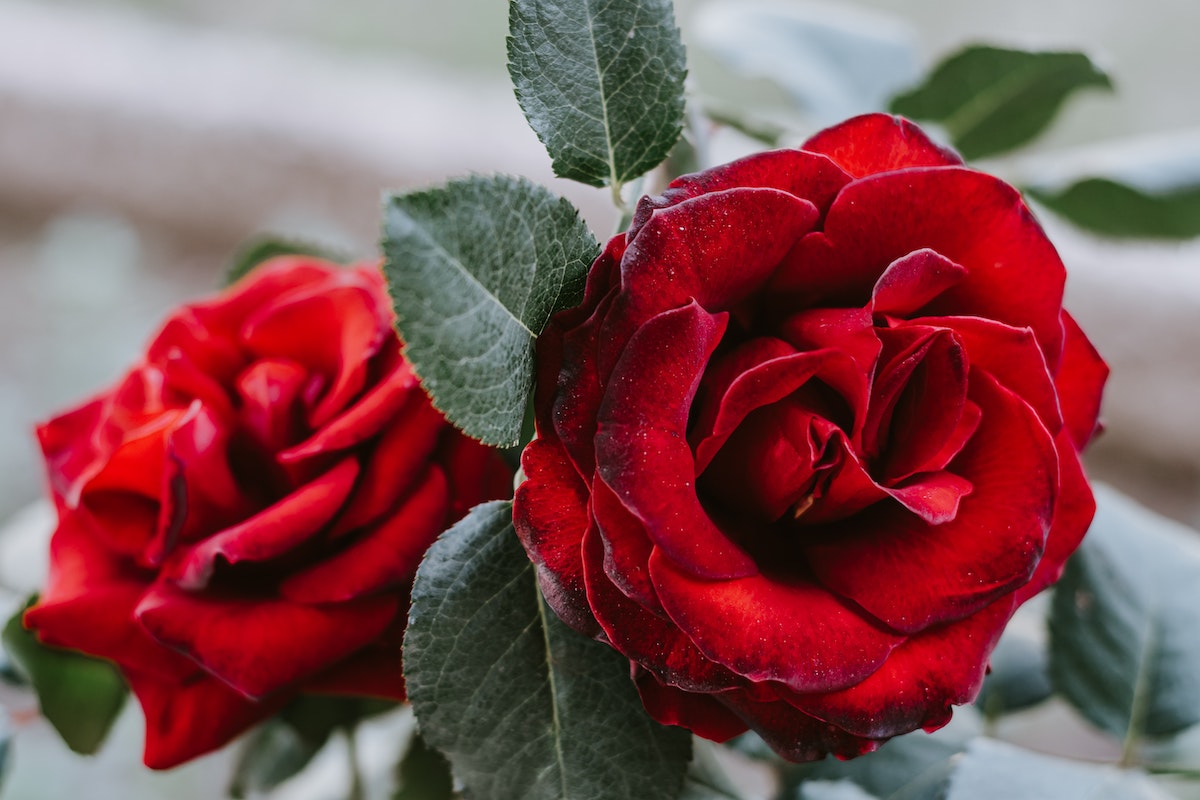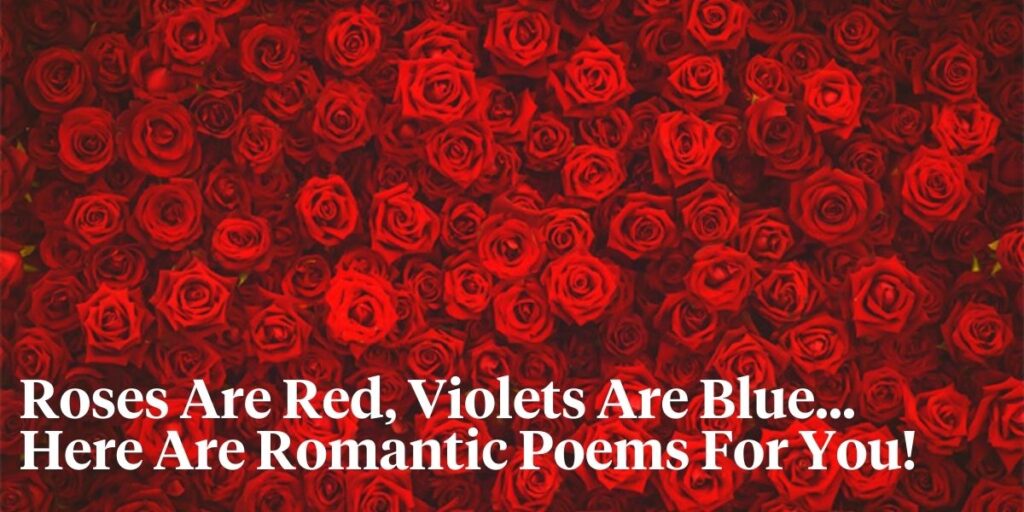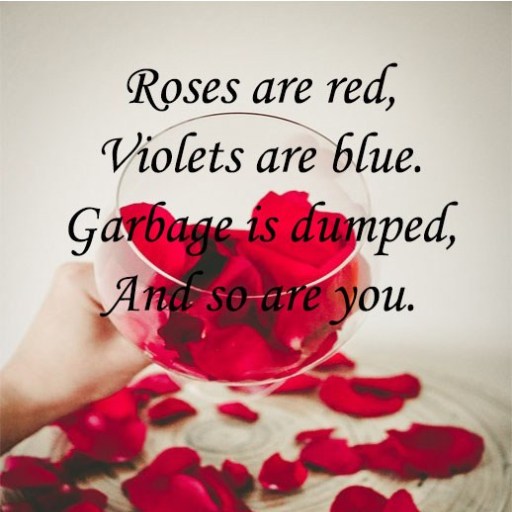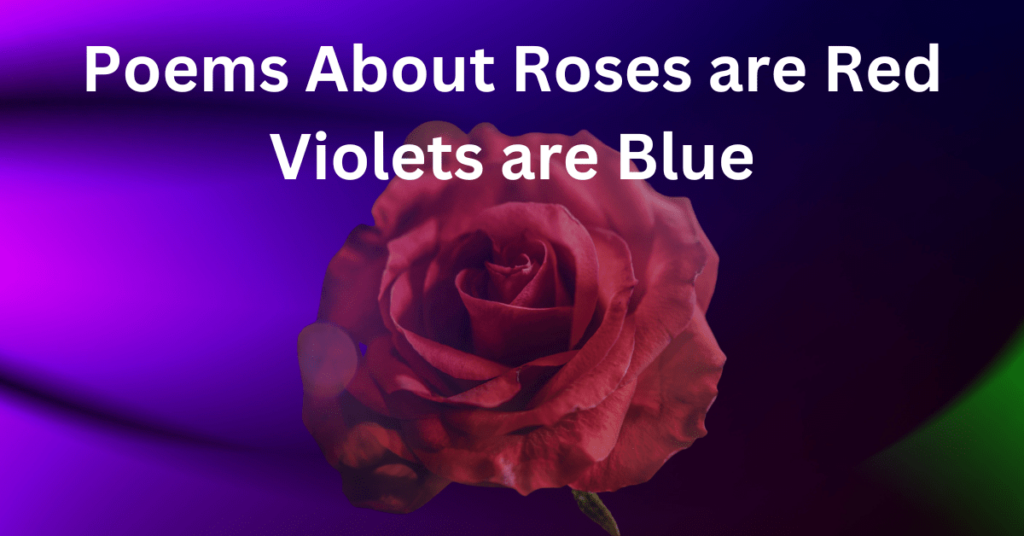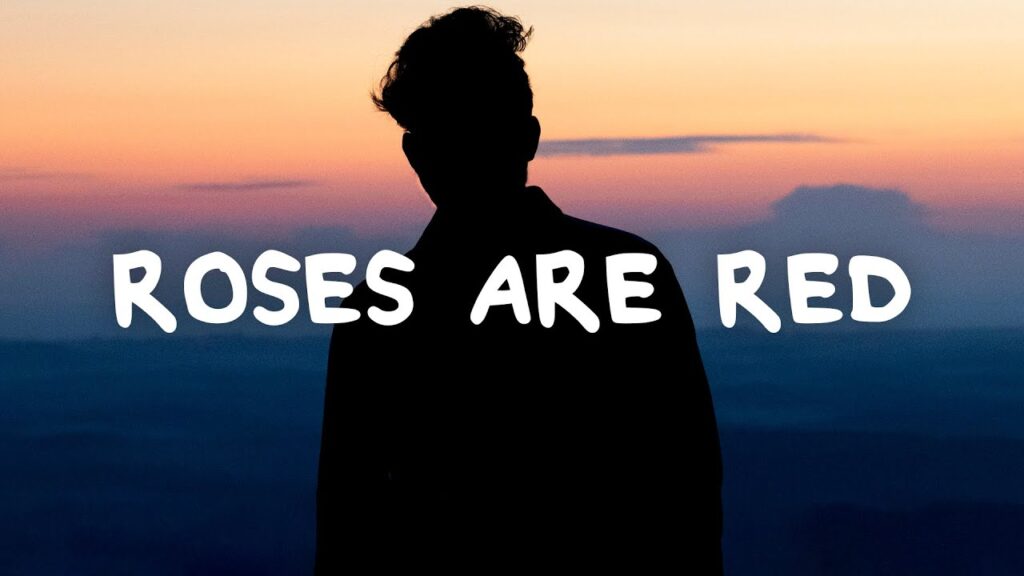Roses are red, violets are blue, sugar is sweet, and so are you. This simple poem has been a staple in the world of romantic poetry for centuries. While the exact origins of “roses are red, violets are blue” are unknown, it has become one of the most recognizable phrases in literature. From romantic love letters to cheesy Valentine’s Day cards, this classic poem has been used to express love and affection in countless ways.
But why are roses are red violets are blue poems so popular? Perhaps it’s because the poem is short and sweet, making it easy to remember and recite. Maybe it’s the familiarity of the imagery, as roses and violets are common flowers with distinct colors. Or it could be the way that the poem’s structure allows for endless variations and personalization. Whatever the reason, roses are red violets are blue poems continue to be a beloved and timeless form of expression for anyone looking to express their love and affection.
Table of Contents
The Origin of Roses are Red Violets are Blue Poems
The exact origin of “roses are red, violets are blue” is unclear, but it is believed to have originated in England in the late 16th century. The earliest known version of the poem appeared in 1590 in a collection called “The Faerie Queene” by Edmund Spenser. The stanza read:
“She bath’d with roses red, and violets blew, And all the sweetest flowres, that in the forrest grew.”
While this is not the exact phrase that we know today, it is considered to be the earliest known precursor to the modern “roses are red, violets are blue” poem.
The poem gained popularity in the 18th and 19th centuries, particularly in England and the United States. It was often used in Valentine’s Day cards and other love letters, and variations of the poem began to emerge. For example, in the early 19th century, the poet Thomas Moore wrote a version that went:
“Oh the red rose may be fair, And the lily statelier; But my shamrock, one in three Takes the very heart of me!”
Over time, the poem has evolved and been adapted to suit different contexts and audiences, but it remains a beloved and recognizable form of expression.
Traditional Roses are Red Violets are Blue Poems
Traditional “roses are red, violets are blue” poems follow a simple structure and usually consist of four lines with an AABB rhyme scheme. Here are some examples of traditional roses are red violets are blue poems:
- Roses are red, Violets are blue, Sugar is sweet, And so are you.
- Roses are red, Violets are blue, I love you more, Than you’ll ever know.
- Roses are red, Violets are blue, You’re the sunshine, That brightens up my day.
- Roses are red, Violets are blue, My heart beats faster, Whenever I’m with you.
- Roses are red, Violets are blue, I’ll always cherish, The love I have for you.
These traditional poems are straightforward, but they convey a lot of meaning with just a few words. They are often used as a starting point for more creative and personalized poems.
Modern Variations of Roses are Red Violets are Blue Poems
Modern variations of “roses are red, violets are blue” poems often deviate from the traditional AABB rhyme scheme and structure. These poems may incorporate wordplay, humor, or pop culture references. Here are some examples of modern variations of “roses are red, violets are blue” poems:
- Roses are red, Violets are blue, I’m not a poet, But I’m crushing on you.
- Roses are red, Violets are blue, I’m like a bird, I only fly to be with you.
- Roses are red, Violets are blue, You’re my favorite person, On Instagram, Snapchat, and TikTok too.
- Roses are red, Violets are blue, I never knew love, Until I met you.
- Roses are red, Violets are blue, I love you more, Than bacon, and that’s saying a lot too.
Modern variations of the poem allow for creativity and personalization. They can be tailored to the recipient’s interests or hobbies, making them even more special and meaningful.
Tips for Writing Your Own Roses are Red Violets are Blue Poem
If you want to write your own “roses are red, violets are blue” poem, here are some tips to get you started:
- Think about the message you want to convey: What do you want to say to the person you’re writing the poem for? Is it a declaration of love, a compliment, or a joke? Knowing the message you want to convey will help you choose the right words and structure for your poem.
- Consider the recipient’s interests: Incorporating the recipient’s interests or hobbies into the poem can make it more personal and meaningful. Think about what they like and try to include it in the poem.
- Experiment with wordplay: Playing with words and using clever rhymes can make your poem more interesting and memorable. Consider using puns or other forms of wordplay to add some humor or cleverness to your poem.
- Don’t be afraid to be cheesy: “Roses are red, violets are blue” poems are meant to be cheesy and sentimental. Don’t worry too much about being overly romantic or corny – that’s part of the charm of these types of poems!
- Keep it short and sweet: The beauty of “roses are red, violets are blue” poems is their simplicity. Try to keep your poem short and sweet, no more than four lines. This will help you stay focused on your message and make your poem more memorable.
With these tips in mind, you’ll be able to create a unique and heartfelt “roses are red, violets are blue” poem that your recipient will cherish.
Examples of Creative Roses are Red Violets are Blue Poems
Here are some examples of creative “roses are red, violets are blue” poems that deviate from the traditional structure and incorporate wordplay, humor, or pop culture references:
- Roses are red, Violets are blue, I’m falling for you, Like autumn leaves do.
- Roses are red, Violets are blue, I’ll be your coffee, If you’ll be my brew.
- Roses are red, Violets are blue, I love you more, Than Harry loves Ginny Weasley, it’s true.
- Roses are red, Violets are blue, You’re the one I want to Netflix and chill with, No matter what we choose to view.
- Roses are red, Violets are blue, You’re my sunshine on a cloudy day, And I hope you feel the same way too.
- Roses are red, Violets are blue, I’ll be the Nutella, If you’ll be the bread that holds us two.
These poems show how “roses are red, violets are blue” can be adapted to suit different contexts and audiences. They’re fun, creative, and personalized, making them memorable and special to the recipient.
Conclusion:
“Roses are red, violets are blue” poems may be a classic form of poetry, but they remain timeless and versatile. Their simplicity and charm make them ideal for expressing sentiments of love, appreciation, or humor. Whether it’s a traditional or a modern variation, a “roses are red, violets are blue” poem can be tailored to the recipient’s interests, making it all the more special. With a little creativity, anyone can write a memorable and heartfelt poem using this timeless format. So, the next time you want to express your feelings to someone, consider using the timeless and versatile format of “roses are red, violets are blue” poems.

